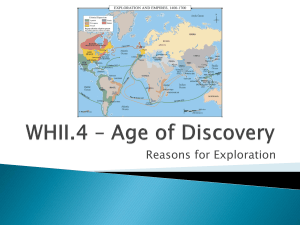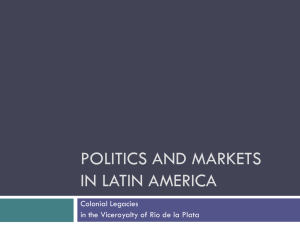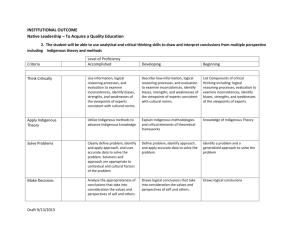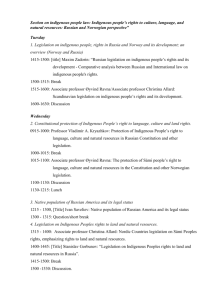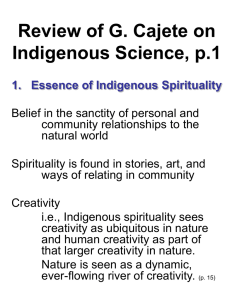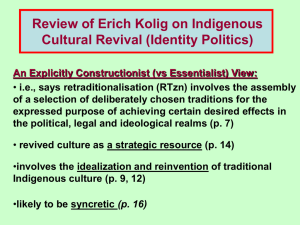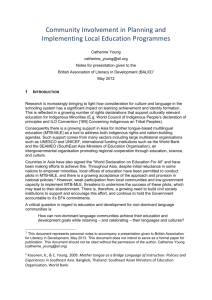Education Committee Protecting Minority Languages Main Submitter
advertisement
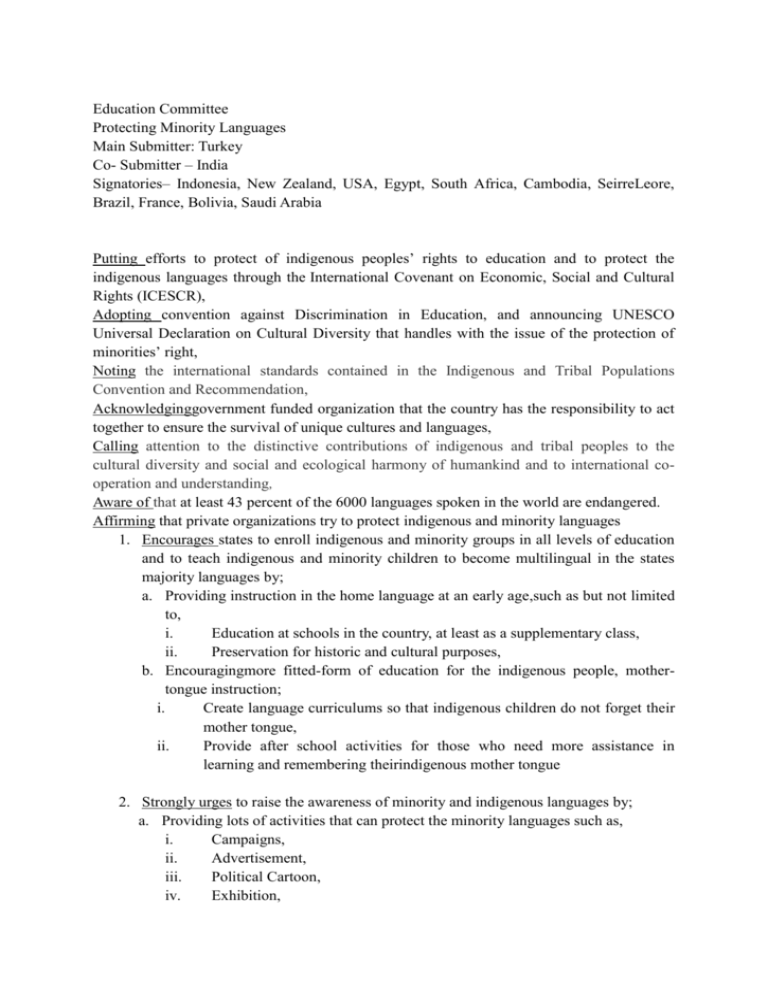
Education Committee Protecting Minority Languages Main Submitter: Turkey Co- Submitter – India Signatories– Indonesia, New Zealand, USA, Egypt, South Africa, Cambodia, SeirreLeore, Brazil, France, Bolivia, Saudi Arabia Putting efforts to protect of indigenous peoples’ rights to education and to protect the indigenous languages through the International Covenant on Economic, Social and Cultural Rights (ICESCR), Adopting convention against Discrimination in Education, and announcing UNESCO Universal Declaration on Cultural Diversity that handles with the issue of the protection of minorities’ right, Noting the international standards contained in the Indigenous and Tribal Populations Convention and Recommendation, Acknowledginggovernment funded organization that the country has the responsibility to act together to ensure the survival of unique cultures and languages, Calling attention to the distinctive contributions of indigenous and tribal peoples to the cultural diversity and social and ecological harmony of humankind and to international cooperation and understanding, Aware of that at least 43 percent of the 6000 languages spoken in the world are endangered. Affirming that private organizations try to protect indigenous and minority languages 1. Encourages states to enroll indigenous and minority groups in all levels of education and to teach indigenous and minority children to become multilingual in the states majority languages by; a. Providing instruction in the home language at an early age,such as but not limited to, i. Education at schools in the country, at least as a supplementary class, ii. Preservation for historic and cultural purposes, b. Encouragingmore fitted-form of education for the indigenous people, mothertongue instruction; i. Create language curriculums so that indigenous children do not forget their mother tongue, ii. Provide after school activities for those who need more assistance in learning and remembering theirindigenous mother tongue 2. Strongly urges to raise the awareness of minority and indigenous languages by; a. Providing lots of activities that can protect the minority languages such as, i. Campaigns, ii. Advertisement, iii. Political Cartoon, iv. Exhibition, b. Urgingminorities and indigenous people to claim minority or indigenous status by; i. Emphasizing the definition of ‘Indigenous’ and ‘Minority’, ii. Educating histories and traditions iii. Producing films, iv. Producing a classroom resources, 3. Provides financial aid to; a. Schools which teach indigenous languages for better education equipment such as but not limited to, i. E-books, hard copy books, reference books, ii. Indigenous language dictionaries, iii. Translation devices, b. Schools where the funds are required to educate indigenous languages such as but not limited to, i. Teachers who are able to educate indigenous languages, ii. Indigenous languages text books, 4. Establishes government funded its own organizations that can advertise the seriousness of indigenous languagesthrough; a. Campaigns viatechnologies such as but not limited to, i. Internet, ii. Podcasts, b. Promoting utilization of internet and podcast. which can raise the awareness of protecting minority languages such as but not limited to, i. Translation, ii. Catalog, iii. Store, iv. Providing information, v. Accessing to languages, c. Using written documents to preserve information such as by promoting the utilization of, i. Native literature, ii. Native linguistics,
